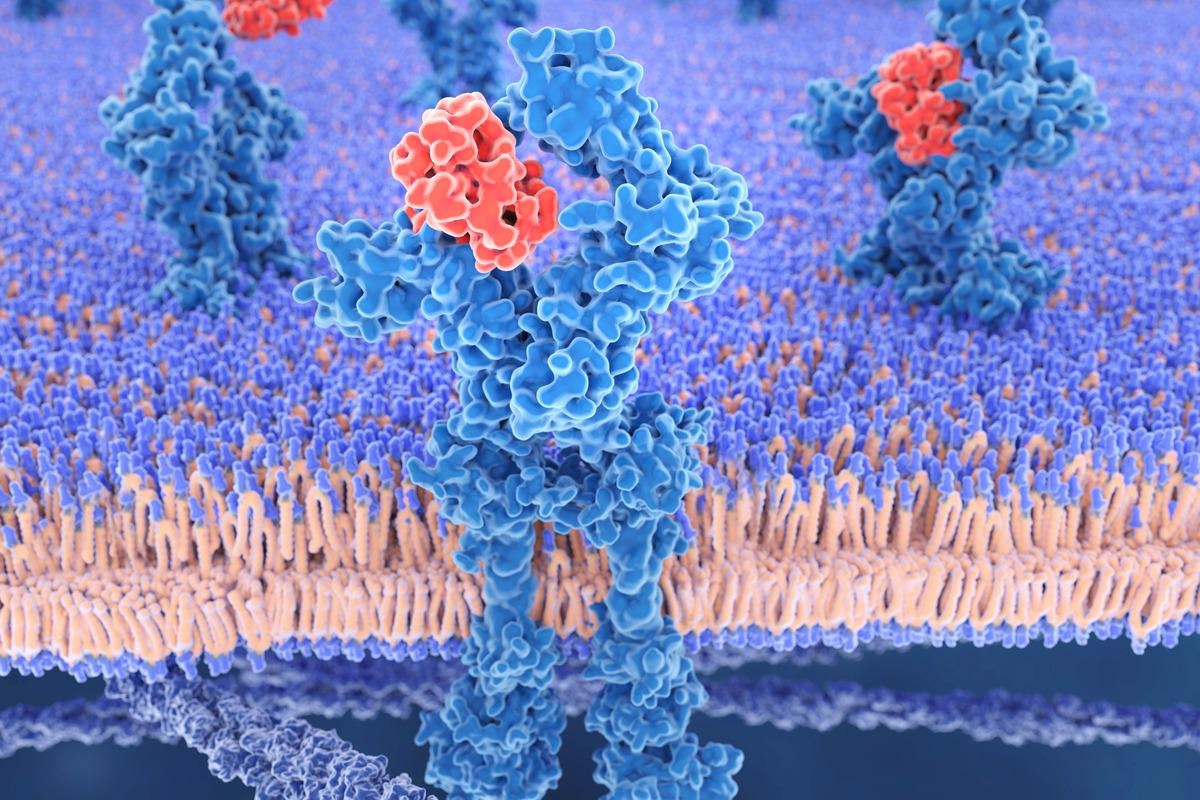An exciting study recently published in the Proceedings of the National Academy of Sciences (PNAS) underscores the role of a well-established cytokine interleukin-13 (IL-13) in protecting our cells against the severe acute respiratory syndrome coronavirus 2 (SARS-CoV-2) – and elucidates why individuals with allergic asthma may (perhaps counterintuitively) have better infection outcomes than the general population.
 Study: SARS-CoV-2 infection of airway cells causes intense viral and cell shedding, two spreading mechanisms affected by IL-13. Image Credit: Juan Gaertner/Shutterstock
Study: SARS-CoV-2 infection of airway cells causes intense viral and cell shedding, two spreading mechanisms affected by IL-13. Image Credit: Juan Gaertner/Shutterstock
Background
During the past two decades, we have witnessed several coronavirus outbreaks, with the most recent being the ongoing pandemic of coronavirus disease 2019 (COVID-19) caused by SARS-CoV-2. This actually reflects an increase in transmissibility and tropism for this large viral family.
But despite belonging to the same group of betacoronaviruses as the original SARS-CoV and MERS-CoV, SARS-CoV-2 swiftly emerged as an extremely transmissible human pathogen from the early stages of infection, implying profound viral shedding from patients in an asymptomatic or quiescent disease state.
In virology, we consider viral transmission by looking at the viruses as independent infectious units. Nonetheless, viral clustering may substantially ease person-to-person transmission, as well as precipitate the ability to colonize different regions in the lungs or on the human body.
Therefore, an adequate understanding of the SARS-CoV-2 life cycle in airway cells could expose potential targets for preventing the viral spread and, in turn, advance our therapeutic armamentarium.
This was the underlying reason why a group of US researchers decided to conduct comprehensive, in-depth experiments in order to reveal biological reasons for COVID-19 progression, but also to ascertain why certain asthma patients are actually less susceptible to severe forms of the disease.
About the study
The study was led by medical student Cameron Morrison from Dr. Camille Ehre's laboratory and research assistant Caitlin Edwards from Dr. Ralph S. Baric's laboratory, both from the University of North Carolina at Chapel Hill, United States.
In their methodological approach, these scientists employed specific genetic analyses of human airway cells that were infected with SARS-CoV-2 to order to establish whether the expression of the human protein angiotensin-converting enzyme-2 (ACE2) governed the subsequent cell infection and the amount of the virus in these cells.
The researchers then used electron microscopy, which enabled cross-sectional and high-magnification views of airway cells, and that was necessary to pinpoint viral exodus from infected ciliated cells tasked with moving mucus along the airway surface.
Findings
The study has shown that specific tropism for these ciliated cells was linked to severe cytopathic effects, resulting in membrane disruption and cell shedding but also ensuring rapid liberation of many viral particles shortly after inoculation.
Electron microscopy also unveiled severe cytopathogenesis, which pertains to changes that are observed inside human cells as a result of viral infection. Further experiments on infected airway cells showed that the quantity of a major mucus protein known as MUC5AC has been reduced inside the cells.
The latter was probably due to protein secretion intended to trap invading viruses; however, the viral load continued to increase because the cells producing MUC5AC were overwhelmed when faced with a rampant viral infection.
Previous epidemiological studies showed that a characteristic feature of allergic asthma patients was the overproduction of MUC5AC, and now we know they are less susceptible to severe forms of COVID-19. Furthermore, cytokine IL-13 can increase MUC5AC secretion in the lungs when patients with asthma encounter an allergen.
Consequently, this research group demonstrated that the treatment with IL-13 can diminish viral shedding and cell damage tremendously by influencing viral entry and replication, offering a protective effect against SARS-CoV-2 infection.
Conclusion
This paper has clearly shown how SARS-CoV-2 infection of human airway cell cultures represents a noteworthy model for appraising the replication and spread patterns utilized by SARS-CoV-2 in human airways.
We think this research further shows how important it is to treat SARS-CoV-2 infection as early as possible”, said Dr. Ehre. “And it shows just how important specific mechanisms involving ACE2 and IL-13 are, as we try our best to protect patients from developing severe infections”, she added.
And even though cytokines like IL-13 cannot be used as a salient treatment option due to their potential to trigger inflammatory processes, it is pivotal to appreciate natural molecular pathways which cells can use to shield themselves from pathogen invasion, as this is actually the way towards new therapeutic targets.